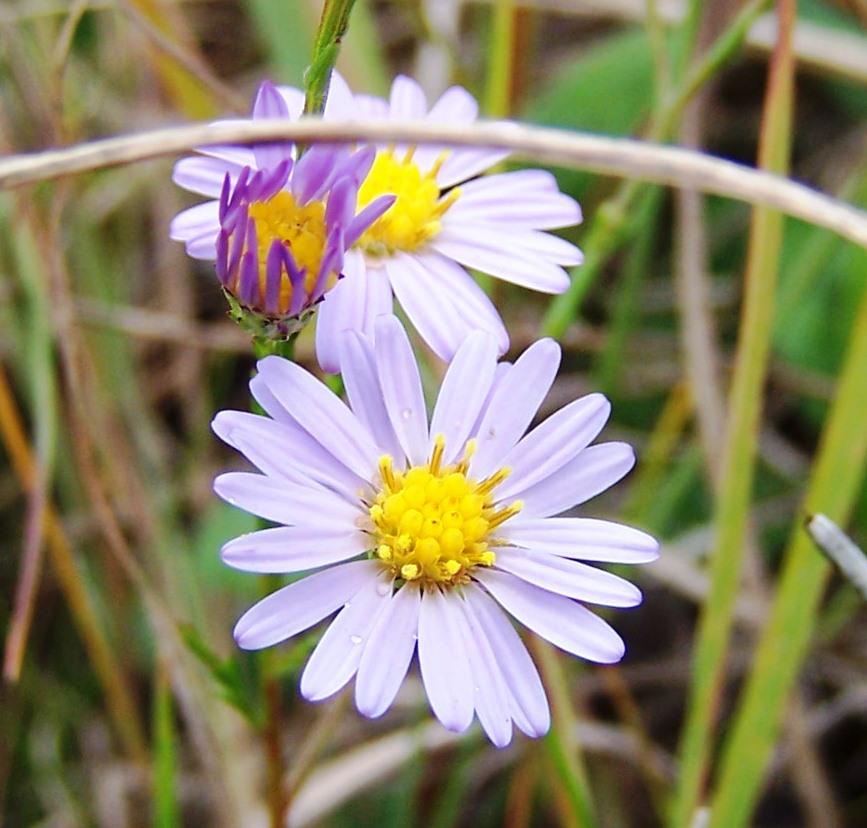
Purple and Yellow.
I would never want these colors in my kitchen, but on the prairie – and certain pro sport jerseys – they work.
Asters of all types and sizes are now blooming on the prairie, providing the last blast of color before frost sets in. They are the original late bloomers.
I like how the purple and yellow stands out against the rusty-brown and green grasses. The tiny Sky Blue Aster, Aster oolentangiensis, that grows on the dry prairie, is my favorite. It’s a delicate aster with thin stalks and small elongated leaves that grows about a foot tall. I try not to step on them as they gently wave in the breeze.
Asters mark the end of the growing season, just as the pasque flower marks the beginning. Amazingly, both flowers grow on the dry prairie just a few feet apart. Since the burn on March 22, countless flowers have bloomed on the dry prairie. It’s a miracle that land so steep, rocky and dry could produce anything. And yet, each year the cycle continues like clock work, with each flower appearing like an old friend coming for a long overdue visit. The aster is the last visitor before winter, so I savor it a bit more.
The name aster comes from the Greek word for “star,” and its star-like flowers grow in a rainbow of colors – white, red, pink, purple, lavender and blue, with mostly yellow centers.
According to Living in Season, the name comes from the same root word as astrology and asteroid, asterisk and disaster–and in England, they are sometimes called starwort – wort simply means herb or plant with healing properties. The legend goes that Virgo scattered star-dust on earth and they became asters. Another legend attributes their origin to the goddess Astraea – often associated with the constellation Virgo – who withdrew from earth out of sorrow and looking down wept. Her tears became asters.
In ancient times, some believe that the perfume from their burning leaves could drive away evil serpents. Today, they’re known as a talisman of love and a symbol of patience. The French had a special tradition for the aster flower. This flower would be placed on the grave of a French soldier, as a tribute to his bravery and valor.
The stories make me like the aster even more. We can certainly use strength, bravery and patience as we head into winter.
The little star-like flower invites us to enjoy the warmth of autumn and to soak up the remaining color. And finally, it reminds us that the world needs purple and yellow, even if we wouldn’t be caught dead wearing it.
Diane Schwartz is the Site Coordinator at Schumacher Farm Park in Waunakee. The park has a 10 acre prairie restoration and a native prairie remnant where you will find the harbinger of winter, the sky blue aster, and the harbinger of spring, the pasque flower. You can find her exploring the prairie or planning the upcoming Halloween at the Farm event. The event features a Haunted Hayride through the prairie.

